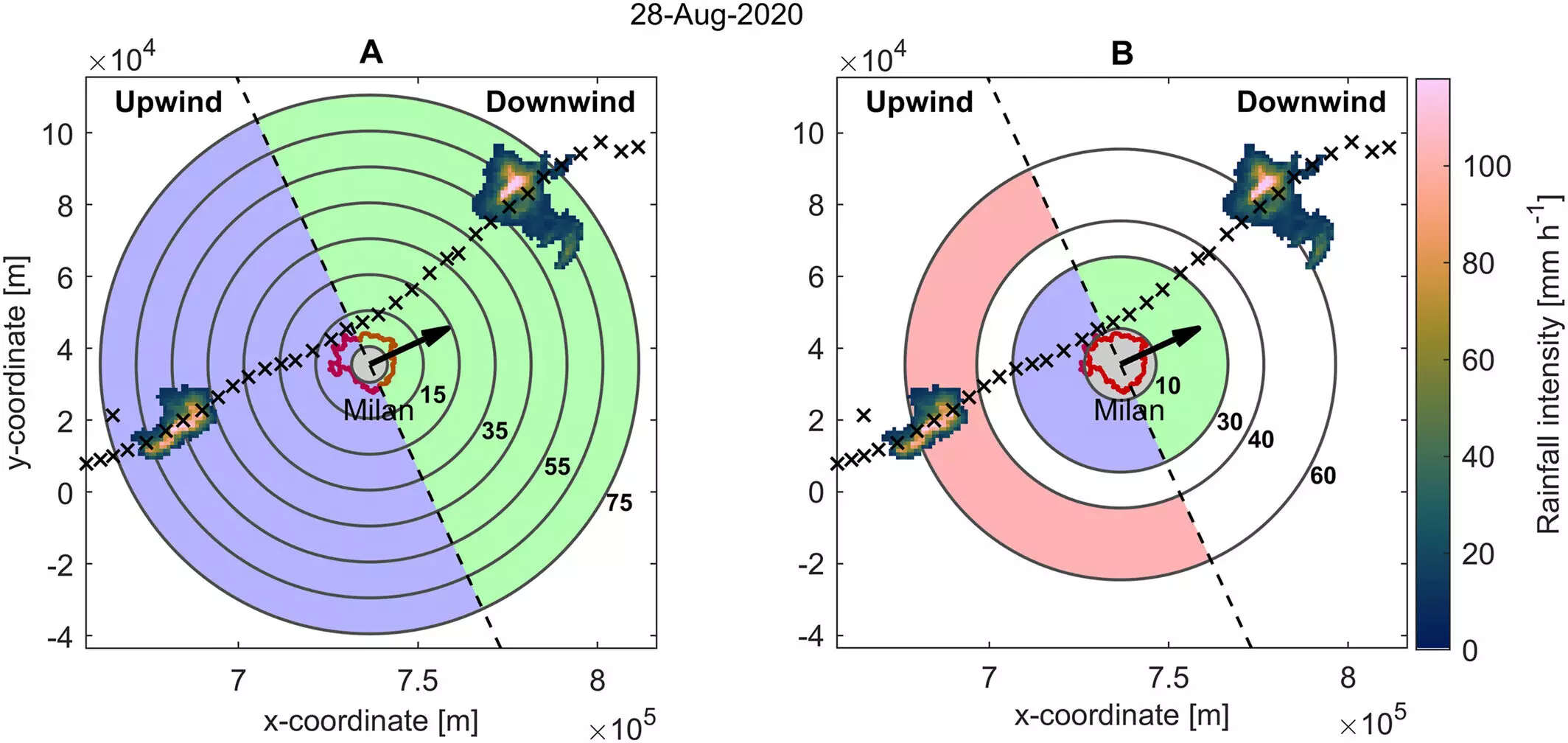Recent research unveils a critical phenomenon: summer storms are not merely a seasonal inconvenience—they are evolving into a significant threat, particularly in urban areas. A comprehensive study examining the storm dynamics in eight cities across Europe and the United States highlights a stark reality. It shows that cities are breeding grounds for more frequent and intense storms than their rural counterparts. The implications of this finding are profound, especially as urban populations continue to swell, and climate change alters weather patterns globally. Understanding how atmospheric processes are influenced by urban structures is essential for effective city planning and flood mitigation strategies.
The research examines a variety of urban environments, including Milan, Berlin, London, Phoenix, and others, covering seven years of high-resolution weather data. These cities differ in size, climate, and infrastructure but share a critical attribute: they are predominantly located in flat regions devoid of significant water bodies that could influence meteorological conditions. The study meticulously tracked the formation and intensity of storms both in the cities themselves and their surrounding areas, shedding light on a troubling trend: more storms develop over urban settings than in nearby rural landscapes.
One of the intriguing aspects of this research is the role of urban heat islands—a phenomenon where cities heat up significantly more than their rural surroundings. This temperature disparity causes air masses over cities to rise, leading to the formation of rain clouds. Moreover, the presence of skyscrapers acts analogous to mountainous regions, promoting further uplift of moist air and increasing the likelihood of storm formation. Herminia Torelló-Sentelles, the lead researcher, likens cities to “obstacles” that disrupt the flow of air—an interaction resulting in concentrated storm activity directly over urban landscapes.
Interestingly, the research also points out that aerosol pollution can have varying impacts on rainfall. Depending on their nature, aerosols present in urban atmospheres can either suppress rainfall or enhance it, complicating the already intricate relationship between urbanization and weather phenomena. This highlights a critical need to understand whether emissions and particulates might be contributing to or mitigating storm intensity.
A key takeaway from the study is the tendency for cities to experience ‘fire hose’-like storms—intense bursts of rain that are not uniformly distributed. In contrast to rural areas where rain often falls gently and evenly, urban storms can unleash concentrated downpours that quickly overwhelm drainage systems. This spatial distribution of rain carries profound implications for urban infrastructure and flood management; a rapid influx of water can lead to urban flooding, damaging property and posing threats to public safety.
The research quantified this phenomenon, revealing that larger cities experience rainfall intensification rates significantly higher than their smaller counterparts, with intensifications of up to 11% in large urban areas compared to just a few percent in smaller ones. The concentrated nature of these rain events underscores an urgent need to reassess how cities build and maintain their stormwater management systems.
While the study outlines general trends, it also reveals the unique characteristics that each city exhibits in terms of rainfall patterns. For example, while most urban centers generate localized storm activity, locations like Berlin and Charlotte experience storms with more dispersed rainfall distribution. These variances underline an essential message for city planners: a one-size-fits-all approach to stormwater management is insufficient. Rather, cities must implement customized strategies that account for their specific meteorological behaviors and environmental factors.
Furthermore, the research reinforces the urgency for comprehensive planning in the face of climate change. The increased frequency and severity of storms pose an accumulating threat to urban infrastructure, necessitating proactive measures. As cities grow and evolve, their flood resilience must be prioritized, incorporating innovative engineering solutions and strategies to adapt to changing climatic conditions.
Given the complexities surrounding urban storm patterns and their interactions with climate change, further studies are vital. An expanded database of urban environments will allow researchers to generalize findings and identify key characteristics influencing storm behavior. As the world faces increasing urbanization, understanding the intricate relationship between cities and storm dynamics will be pivotal for fostering safer, more resilient urban environments.
The alarming patterns unearthed by this study serve as a clarion call for modern urban planning. As cities continue to expand and climate-related challenges intensify, the need for innovative solutions to mitigate storm impacts is clearer than ever. By recognizing the critical role that urban environments play in exacerbating storm risk, we can move toward more effective and sustainable city designs that prioritize the safety and well-being of their inhabitants.

